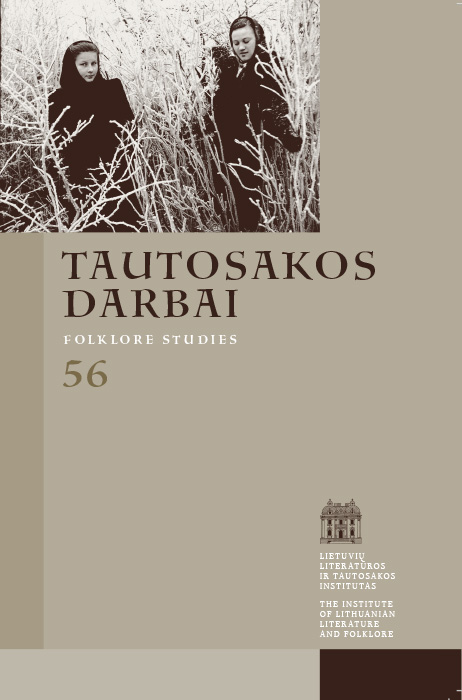Karaimiška Trakų erdvė vietos gyventojų pasakojimuose ir padavime apie stebuklingą kunigaikščio Vytauto žirgą
Santrauka
Straipsnio tyrimo objektas – Trakų karaimų įvaizdis vietos gyventojų ir pačių karaimų sakytinėje kultūroje. Tyrimas remiasi prielaida, kad ryšys su Trakais yra neatsiejama šios tautos tapatybės dalis, kaip ir Trakų tapatybė neatsiejama nuo karaimų. Vis dėlto, norint kalbėti apie karaimiškus Trakus, būtina išskirti konkrečią erdvę. Ji apima šiaurinę Trakų pusiasalio dalį, kuri trakiečių vadinama Karaimščizna arba Karaimų gatve. Ryškiausi urbanistiniai jos riboženkliai – miesto viduryje stovintis šv. Jono Nepomuko koplytstulpis vienoje pusėje (pietinėje) ir vadinamasis Geležinis tiltas kitoje (šiaurinėje). Taip pat išskirtinos bendruomenei svarbios teritorijos už miesto ribų.
Straipsnyje keliama problema, kad ši erdvė nėra pakankamai įvertinta kaip karaimiško pasaulėvaizdžio reiškinys. Remiantis 2007–2018 m. užrašytais karaimų ir kitų tautybių trakiečių pasakojimais, siekiama išsiaiškinti, kaip kuriamas karaimiškų Trakų paveikslas, kokios geografinės, kultūrinės, socialinės šios erdvės savybės išskiriamos. Šiuo požiūriu nagrinėjamas ir lietuvių folkloristams turbūt geriausiai žinomas karaimų padavimas, kuriame pasakojama apie stebuklingą Vytauto Didžiojo žirgą, išgelbėjusį karaimus nuo pavasarį užklupusio potvynio. Padavimas pasitelkiamas kaip rašytinis ir sakytinis tautosakos šaltinis, kuriame pasakojama ne tik apie stebuklingą įvykį, bet ir apie karaimams svarbias Trakų vietas ir apie juos pačius. Ypatingas dėmesys skiriamas Simono Firkovičiaus (1897–1982) ir Abraomo Šišmano (Abraam Szyszman, 1879–1946) užrašytiems padavimo variantams. Atkreipiamas dėmesys į šių asmenų užrašytų Trakų padavimų rinkinius, kurie dar laukia išsamesnių mokslinių tyrimų.
Darbe taikomas lyginamasis, analizės ir interpretacijos metodai. Remiamasi lauko tyrimų medžiaga bei rašytiniais šaltiniais.
Atsisiuntimai
Skaitomiausi šio autoriaus(ų) straipsniai
- Lina Leparskienė, Totorių Vokė. Istorinės atminties ir asmeninių patirčių erdvė , Tautosakos darbai: T 63 (2022)
- Rūta Žarskienė, Inga Vidugirytė, Asta Skujytė-Razmienė, Gražina Kadžytė, Lina Leparskienė, Vita Džekčioriūtė-Medeišienė, Dalia Zaikauskienė, Kronika , Tautosakos darbai: T 58 (2019)
- Guntis Pakalnas, Rimantas Sliužinskas, Asta Skujytė-Razmienė, Radvilė Racėnaitė, Vita Ivanauskaitė-Šeibutienė, Rūta Žarskienė, Lina Leparskienė, Andželika Jakubynienė, Kronika , Tautosakos darbai: T 47 (2014)
- Lina Leparskienė, „Stebiu pasaulį, ieškau mažyčių detalių“: tyrėjos žvilgsniu apie folkloristiką, mitologiją, prigimtinę kultūrą. Pokalbis su 2023 m. Nacionalinės Jono Basanavičiaus premijos laureate Daiva Vaitkevičiene , Tautosakos darbai: T 67 (2024): Tautosakos darbai
